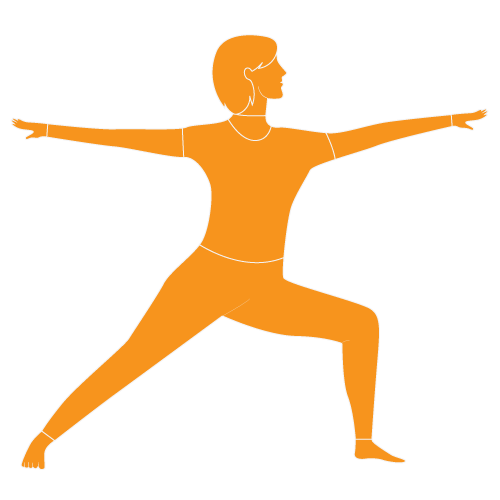
豐樂足跡
在家芭蕾運動
以改善中風成人的平衡、步態和記憶的可行性
- Feigin VL, Brainin M, Norrving B, Martins S, Sacco RL, Hacke W, et al. World Stroke Organization (WSO): global stroke fact sheet 2022. Int J Stroke. 2022 Jan;17(1):18-29. doi:10.1177/17474930211065917.
- Lo SHS, Chau JPC, Chang AM. Strategies adopted to manage physical and psychosocial challenges after returning home among people with stroke: a qualitative study. Medicine (Baltimore). 2021 Mar 12;100(10):[8 p.]. doi:10.1097/MD.0000000000025026.
- Wei TS, Liu PT, Chang LW, Liu SY. Gait asymmetry, ankle spasticity, and depression as independent predictors of falls in ambulatory stroke patients. PLoS One. 2017 May 23;12(5):[14 p.]. doi:10.1371/journal.pone.0177136. eCollection 2017.
- López-Espuela F, Roncero-Martín R, de la Luz Canal-Macías M, Moran JM, Vera V, Gomez-Luque A, et al. Depressed mood after stroke: predictive factors at six months follow-up. Int J Environ Res Public Health. 2020 Dec 20;17(24):[11 p.]. doi:10.3390/ijerph17249542.
- Dai S, Piscicelli C, Clarac E, Baciu M, Hommel M, Pérennou D. Balance, lateropulsion, and gait disorders in subacute stroke. Neurology. 2021 Apr 27;96(17):e2147-59. doi:10.1212/WNL.0000000000011152. Epub 2020 Nov 11.
- Arienti C, Lazzarini SG, Pollock A, Negrini S. Rehabilitation interventions for improving balance following stroke: an overview of systematic reviews. PLoS One. 2019 Jul 19;14(7):[23 p.]. doi:10.1371/journal.pone.0219781. eCollection 2019.
- Patterson KK, Wong JS, Prout EC, Brooks D. Dance for the rehabilitation of balance and gait in adults with neurological conditions other than Parkinson’s disease: a systematic review. Heliyon. 2018 Mar 29;4(3):[25 p.]. doi:10.1016/j.heliyon.2018.e00584. eCollection 2018 Mar.
- Beaudry L, Fortin S, Rochette A. Adapted dance used in subacute rehabilitation post-stroke: impacts perceived by patients, relatives and rehabilitation therapists. Disabil Rehabil. 2020 Oct;42(21):2997-3006. doi:10.1080/09638288.2019.1581845. Epub 2019 Mar 23.
- Letton ME, Thom JM, Ward RE. The effectiveness of classical ballet training on health-related outcomes: a systematic review. J Phys Act Health. 2020 May 1;17(5):566-74. doi:10.1123/jpah.2019-0303.
- Barclay RE, Stevenson TJ, Poluha W, Semenko B, Schubert J. Mental practice for treating upper extremity deficits in individuals with hemiparesis after stroke. Cochrane Database Syst Rev. 2020 May 25;(5):[108 p.]. Art. No.: CD005950. doi:10.1002/14651858.CD005950.pub5.
- Liu C, Su M, Jiao Y, Ji Y, Zhu S. Effects of dance interventions on cognition, psycho-behavioral symptoms, motor functions, and quality of life in older adult patients with mild cognitive impairment: a meta-analysis and systematic review. Front Aging Neurosci. 2021 Sep 20;13:[18 p.]. doi:10.3389/fnagi.2021.706609. eCollection 2021.
- Bandura A. Self-efficacy: toward a unifying theory of behavioral change. Psychol Rev. 1977 Mar;84(2):191-215. doi:10.1037//0033-295x.84.2.191.
- Lorig KR, Holman H. Self-management education: history, definition, outcomes, and mechanisms. Ann Behav Med. 2003 Aug;26(1):[7 p.]. doi:10.1207/S15324796ABM2601_01.
- Kolk S, Klawer EME, Schepers J, Weerdesteyn V, Visser EP, Verdonschot N. Muscle activity during walking measured using 3D MRI segmentations and [18F]-fluorodeoxyglucose in combination with positron emission tomography. Med Sci Sports Exerc. 2015 Sep;47(9):1896-905. doi:10.1249/MSS.0000000000000607.
- Beyaert C, Vasa R, Frykberg GE. Gait post-stroke: pathophysiology and rehabilitation strategies. Neurophysiol Clin. 2015 Nov;45(4-5):335-55. doi:10.1016/j.neucli.2015.09.005. Epub 2015 Nov 4.
- Chen G, Patten C, Kothari DH, Zajac FE. Gait differences between individuals with post-stroke hemiparesis and non-disabled controls at matched speeds. Gait Posture. 2005 Aug;22(1):51-6. doi:10.1016/j.gaitpost.2004.06.009.
- Wang Y, Mukaino M, Ohtsuka K, Otaka Y, Tanikawa H, Matsuda F, et al. Gait characteristics of post-stroke hemiparetic patients with different walking speeds. Int J Rehabil Res. 2020 Mar;43(1):69-75. doi:10.1097/MRR.0000000000000391.
- Weaver NA, Kuijf HJ, Aben HP, Abrigo J, Bae HJ, Barbay M, et al. Strategic infarct locations for post-stroke cognitive impairment: a pooled analysis of individual patient data from 12 acute ischaemic stroke cohorts. Lancet Neurol. 2021 Jun;20(6):448-59. doi:10.1016/S1474-4422(21)00060-0. Epub 2021 Apr 23.
- Noguera C, Carmona D, Rueda A, Fernández R, Cimadevilla JM. Shall we dance? dancing modulates executive functions and spatial memory. Int J Environ Res Public Health. 2020 Mar 17;17(6):l17 p.]. doi:10.3390/ijerph17061960.
- Teixeira-Machado L, Arida RM, de Jesus Mari J. Dance for neuroplasticity: a descriptive systematic review. Neurosci Biobehav Rev. 2019 Jan;96:232-40. doi:10.1016/j.neubiorev.2018.12.010. Epub 2018 Dec 10.
- Patterson KK, Wong JS, Nguyen TU, Brooks D. A dance program to improve gait and balance in individuals with chronic stroke: A feasibility study. Top Stroke Rehabil. 2018 Sep;25(6):410-6. doi:10.1080/10749357.2018.1469714.
- Demers M, McKinley P. Feasibility of delivering a dance intervention for subacute stroke in a rehabilitation hospital setting. Int J Environ Res Public Health. 2015;12(3):3120-32. doi:10.3390/ijerph120303120.
- MacKay-Lyons M, Billinger SA, Eng JJ, Dromerick A, Giacomantonio N, Hafer-Macko C, et al. Aerobic exercise recommendations to optimize best practices in care after stroke: AEROBICS 2019 update. Phys Ther. 2020 Jan 23;100(1):149-56. doi:10.1093/ptj/pzz153.
- Hincapié-Sánchez MF, Buriticá-Marín ED, Ordoñez-Mora LT. Characterization of dance-based protocols used in rehabilitation: a systematic review. Heliyon. 2021 Dec 9;7(12):[19 p.]. doi: 10.1016/j.heliyon.2021.e08573. eCollection 2021 Dec.
- Grigoletto D, Marcolin G, Borgatti E, Zonin F, Steele J, Gentil P, et al. Kettlebell training for female ballet dancers: effects on lower limb power and body balance. J Hum Kinet. 2020 Aug 31;74:15-22. doi:10.2478/hukin-2020-0010. eCollection 2020 Aug.
- American Heart Association. Recovering from a stroke: the role of exercise [Internet]. 2021 April 29 [cited 2022 March 10]. [about 1 p.]. Available from: https://professional.heart.org/en/science-news/physical-activity-and-exercise-recommendations-for-stroke-survivors/Commentary
- Lo SHS, Chang AM, Chau JPC. Stroke self-management support improves survivors’ self-efficacy and outcome expectation of self-management behaviors. Stroke. 2018 Mar;49(3):758-60. doi:10.1161/STROKEAHA.117.019437. Epub 2018 Feb 2.
- ATS Committee on Proficiency Standards for Clinical Pulmonary Function Laboratories. ATS statement: guidelines for the six-minute walk test. Am J Respir Crit Care Med. 2002 Jul 1;166(1):111-7. doi:10.1164/ajrccm.166.1.at1102.


